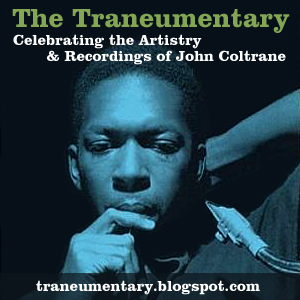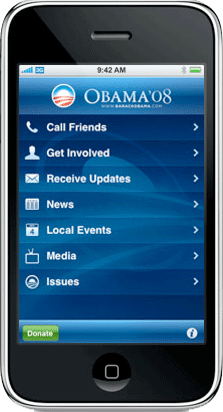October 2008 Archives
This morning I spoke to high school students attending portfolio day at Friends University. I suggested to the students that, while a physical portfolio is essential, an online portfolio can be a useful way to leverage the work and help develop an online reputation. Useful when someone needs to see your portfolio right now, or when your portfolio needs to be in two places at once. Saves on postage, too.
An online portfolio tacitly shows that you're comfortable working in an online, digital environment. So start scanning, digitizing, photographing and writing, and get that work online.
Using the SaaS approach (Software as a Service), you don't have to write a bunch of code to create an online portfolio. Host it from a click 'n build website or a blogging platform. Then link, link, link! Photos? Link to Flickr. Video? Link to Vimeo. Powerpoints? Try Slideshare.
Here are some of the other tools I talked about:
Behance.net, currently open by invitation, offers a well-designed online portfolio space. Currently in beta.
Etsy.com, online marketplace for selling handmade things.
Issuu.com, tool for presenting and sharing formatted printed documents online.
VisualCV.com, currently in beta, allows you to create an interactive, online CV and post it in a searchable database.
DeviantArt.com, suggested by a student. International art community that allows you to upload your art, view art by category and participate in social activities.
Etsy.com, online marketplace for selling handmade things.
Issuu.com, tool for presenting and sharing formatted printed documents online.
VisualCV.com, currently in beta, allows you to create an interactive, online CV and post it in a searchable database.
DeviantArt.com, suggested by a student. International art community that allows you to upload your art, view art by category and participate in social activities.
Here's a video that's sure to go viral, from MoveOn.org:
Build your own video at http://www.cnnbcvideo.com/index.html
One of the nice things about Twitter is that other developers have taken the API and built useful extensions that leverage Twitter's power. You can take control of your Tweetosphere with these handy tools, posted by Brian Solis at PR 2.0, one of my favorite public relations blogs.

The tool I'm most excited about is GroupTweet. You can use GroupTweet to create a workgroup and then share private tweets amongst the team members. The tweets remain outside of your public Tweetstream. Handy for workgroups of any size, or perhaps as a discussion forum for an online class (or physical class, for that matter).
Here's another batch of Twitter tools you'll want to explore. Also, be sure to spend some time with Twitter Search if you're at all interested in reputation management.
iPhone user? Consider Twitterific, a free product available from the Icon Factory.
Follow me on Twitter @DavidKamerer
I've written previously about creating text that's reader friendly, but also creates meaningful keywords to search spiders. Several readers and students have asked for more information on keyword tools. Here's an excellent list of tools to try.
Last week, my colleague Bobby Rozzell observed that blog design might matter for attracting new readers or occasional readers, but not so much for regular, ongoing readers.
He's right. Most readers first see your blog through an RSS reader. If they do click through, they're likely to see a familiar template from a popular blogging platform like WordPress, Blogspot or Movable Type. Templates are the great democratizers of online design. They make enough design available to all. If you're not a designer, that's a good thing.
And the other reason blog design isn't that important: it's the content, stupid. But you already knew that.
What do you think? Does blog design matter to you?
Google Alerts is one of the most useful, yet basic tools for monitoring the Internet. With the current service, you receive email notification of your preferred searches when new information is added to the index.
If you're new to RSS, or just hungry to learn more, visit this link, which aggregates popular links tagged "RSS" at del.icio.us.
Harder-to-reach audiences are ripe for social media interaction
Boston (September 25, 2008) – Sixty percent of Americans use social media, and of those, 59 percent interact with companies on social media Web sites. One in four interacts more than once per week. These are among the findings of the 2008 Cone Business in Social Media Study.
Richard Edelman points out how the Federal government failed to tell - and sell - the story of why an infusion of cash was needed to stabilize our financial markets. Note that the post was written on Sept. 30, before the bailout passed Congress.
One sure sign the project is being railroaded: no attempt to construct, frame and sell the message. Just gimme the dough.
 While I'm working my way through the excellent "Traneumentary," I'm also happy to report that Bob Dylan's "Theme Time Radio Hour" season three begins this Wednesday.
While I'm working my way through the excellent "Traneumentary," I'm also happy to report that Bob Dylan's "Theme Time Radio Hour" season three begins this Wednesday.If you've ever seen Dylan in concert, you know how enigmatic he can be. So I was a completely surprised to hear him open up on his radio show. He's a charming, genial, quirky host, with an excellent sense of humor and an even better playlist. Each episode is based on a theme, which is explored with music, anecdotes and interviews, all held together with Dylan's bemused presence. You'll hear lots of vintage roots music, including jazz, country and rhythm 'n blues, along with a sprinkling of the best music from modern times.
CROZ FM has archived the shows from seasons 1 and 2. I highly recommend you visit and grab a few shows. Or, you can subscribe to XM Radio and listen on channel 2, XMX, every Wednesday.
Finding time to listen? That's your problem.
In the photo: Bob's playing a sweet old Gibson J-45.
Here, you can watch "Be Here to Love Me," a documentary about the wonderful songwriter Townes Van Zandt ("Pancho and Lefty"). There's a catch: wildly inappropriate commercials may intrude on your viewing (in my case, eye lash makeup ads, not exactly great targeting). Oh well, small price to pay. Enjoy the film, click through, and share the love.
If you're an indie filmmaker, this may be a worthwhile distribution channel.
Learn more from Walt Mossberg's column, originally published in the Wall St. Journal. One more warning: the service is still in beta, so you might find some bugs. But it worked fine for me.
 The Wall St. Journal says Joe Vella "aims to be the Ken Burns of the podcast world." He's completed massive audio
The Wall St. Journal says Joe Vella "aims to be the Ken Burns of the podcast world." He's completed massive audio documentaries on some of the leading lights of the pop and jazz music worlds, including a 33-part epic on John Coltrane, featuring interviews with McCoy Tyner, Jimmy Cobb and Sonny Rollins.
Hit his website for a complete rundown on his oeuvre. You can follow the links to listen online or at iTunes.
Here's a nice feature on him at Apple's website. In production: works on Stephen Sondheim, Miles Davis and Motown.
Load up and listen.

Of course, smart businesses build relationships and make money. I was reminded of this the other day, when I attempted to return something to The Bicycle X-Change, a store in Wichita, Kansas. I had purchased a cable for a vintage three-speed English bicycle that I'm restoring. It turned out my existing cable was OK, so I returned to the store to claim my $8.49. I had with me the cable in its unopened package and my receipt.
The kid behind the counter told me he could not give me a refund, only store credit. I protested, so he got another employee to tell the same story. He pointed out that the receipt says "no cash refunds."
I told him that I understood that the business made that choice, but that it was unacceptable to me, and that I could also make a choice. I walked out of the store.
So who cares? What's one little customer?
Maybe nothing. But I do own six bicycles, one of which always seems to need some sort of attention. I am a former president of a bicycling club. I have organized 100k bicycle touring events. In college I worked in a bicycle shop. I once built a recumbent bicycle from scratch. When my friends are thinking about buying a bicycle, they ask me what to buy, and I go along with them to the store. In a very local way, I am a bicycle opinion leader.
I gotta think that somewhere there's a bicycle shop that wants me to go home happy.
Here's another way to think about my failed attempt to get my $8.49 back. The shop wins. They get to keep my $8.49. And every month, they'll turn around and spend crazy money on marketing to try to get people to walk into the shop. Yellow pages. Newspaper ads. I've even seen television ads for this modest shop.
And they could've had me for free.
This is the lesson of the world-is-flat-social-media environment in which we live. In the old days, businesses sent a stream of messages to their customers, who listened. Today, many of the messages about a business come from its customers, who tweet their experiences. Blog about them. Write reviews on social media sites and message boards. Search engines organize this stream of information and make it easy to find for other customers. Research validates this concept: these messages are more credible than traditional ads. An entire industry has sprung up to manage these new online relationships. Social media marketers and public relations professionals help businesses understand this interactive environment and optimize their performance so the messages work for them, not against them.
I've started riding my bicycle to work, and am saving up for an Electra Amsterdam Royal 8. Know any good dealers near Wichita, Kansas?

The book I'm looking forward to reading will detail how the Barack Obama campaign was built in large part with expert use of social media. I attended an Obama event last winter, and have been impressed with the almost daily updates on how I can participate in his campaign for President.
Now the campaign has created an Obama-specific application for the iPhone. It allows you to participate from one easy portal. For example, it organizes your contacts by state, so you can first call your friends who live in so-called "battleground states."
Of course, iPhone users are likely to be social media-savvy and Democrat-friendly, so it's the right message for the right medium.
Oh, and in case you were wondering, there is a "Donate" button.
McCain's response: "iPhone? What's an iPhone?"
Sticky, sticky, sticky. Well done!
Here's a useful report on blogging as it exists in 2008, courtesy of Technorati. And while you're at it, would you please "Favorite" my blog?


Here's a nice way to give life to formatted print documents online. Upload your PDF file to Issuu, and it becomes part of a social media sharing site with other print-based documents. The Issuu viewer preserves some of the modalities of print while delivering content online. Great for the online portfolio, for showing proofs to clients, for bringing some zazz to lifeless PDFs. And yes, it's free. The example, above, is One Small Seed, a South African magazine of pop culture.

